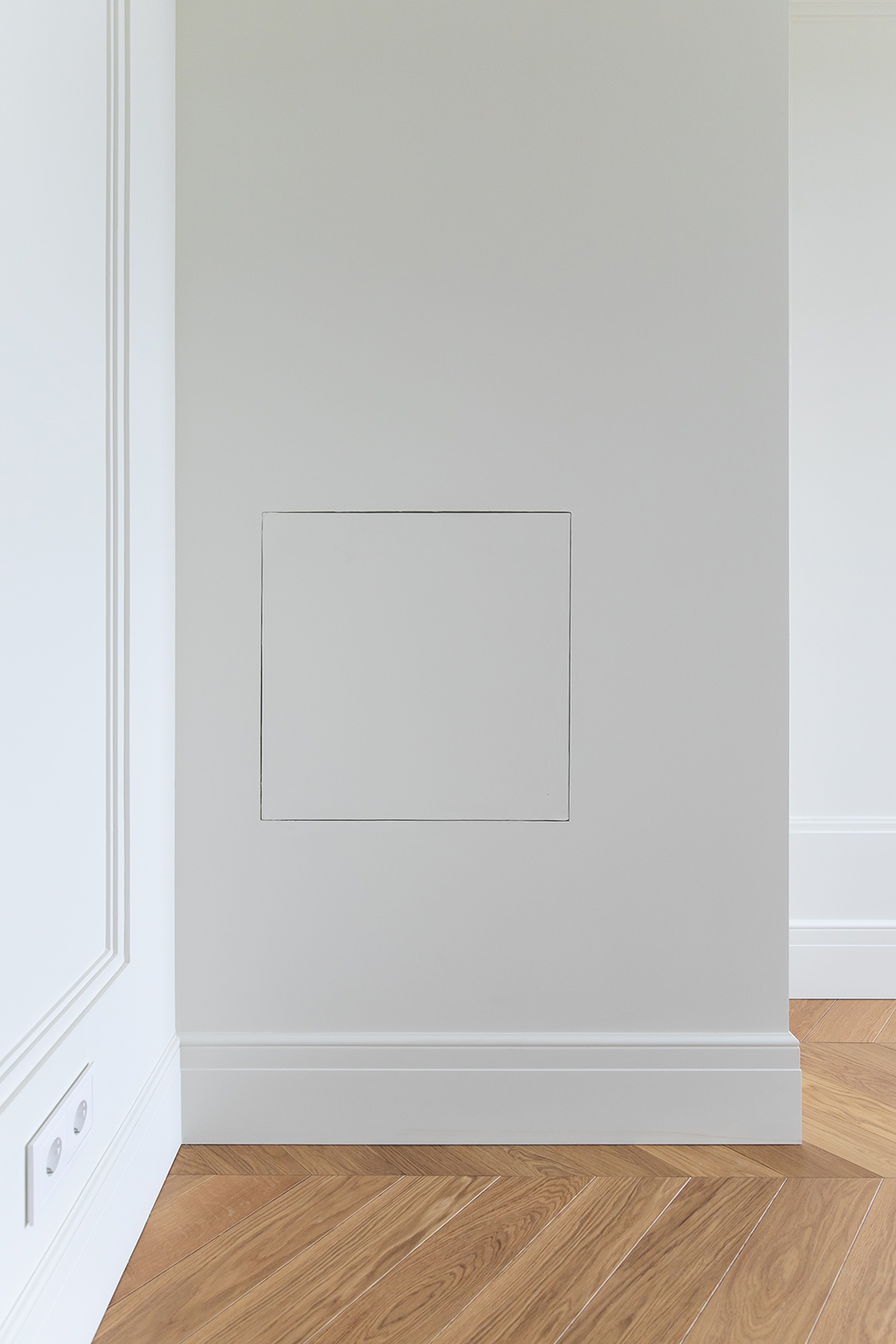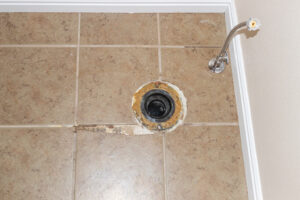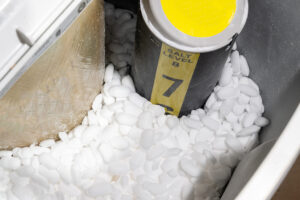
A Plumber’s Guide On The Different Types Of Plumbing Access Panels
Your home’s plumbing system plays a crucial role that shouldn’t be taken for granted. Complex and hidden behind the walls of your home, the plumbing system ensures you have access to clean water for different activities. Without a properly functioning plumbing system, activities in your home would be undoable. But have you ever asked yourself what happens when the system has issues and needs to be repaired by a professional plumber? This is where a plumbing access panel comes into play.
What Is a Plumbing Access Panel?
A plumbing access panel is a small opening in the ceiling or wall that can be opened to provide access to hidden valves, pipes, and other important components of your plumbing system. Its primary role is to give you access to plumbing and mechanical systems behind walls, floors, and ceilings. The panel or door can be easily removed, eliminating the need to break through and repair your drywall or ceiling whenever access is needed. The component can be found on your home’s interior and exterior parts. Plumbing access panels come in different shapes, sizes and are constructed from different materials, including metal or plastic.
Types of Plumbing Access Panels
-
Plastic Access Panel
Plastic access panels are the most common type you will find. The panels are designed to be rust and fade-resistant, allowing you to paint them to match the surrounding décor. Plastic access panels are hassle-free to install and lightweight. They are mainly constructed from high-density polyurethane that can tolerate exposure to water and extreme elements.
Available in different shapes and sizes, plastic access panels can accommodate different plumbing configurations. Besides, they can be installed in different locations, including ceilings, walls, and floors. They have removable doors that allow a plumber easy access to hidden plumbing during maintenance.
-
Drywall Access Panel
If your home has plumbing systems in the attics or basements, a drywall access panel can perfectly do the job. It provides access to water valves, electrical cables, and plumbing pipes. Drywall access panels are made from gypsum board or drywall, which can blend effortlessly with the surrounding ceiling or wall. To ensure they stay in position perfectly, they are secured with fasteners or screws.
Other than giving access to concealed plumbing systems, drywall access panels are built to complement the aesthetics of a space. Some panels may have a painted or textured surface that complements the surrounding wall perfectly, allowing it to remain virtually invisible when not in operation.
-
Metal Access Panel
Metal access panels are a good choice if you want something other than plastic or plywood. Metal panels are sturdy and provide a longer lifespan than other materials. One thing you will like about metal access panels is that they are fire-resistant, ensuring the concealed plumbing is safe in case of a fire. They are available in fire-rated and non-fire-rated options, allowing you to choose the model best for your needs.
Moreover, the construction of metal access panels is resistant to corrosion, allowing you to install them even in damp areas in your home. Metal access panels offer a certain level of security, as unauthorized people cannot easily open them. Although metal access panels are expensive, they are durable and reliable.
-
Wooden Access Panel
If you want a more traditional method of hiding your plumbing components, you can purchase access panels made of plywood. Although its strengths cannot be matched to metal and plastic access panels, it is great to use if you want a vintage-style appearance. The natural look can easily blend in with other wooden surfaces in the room. This type of access panel is usually installed during the initial stages of construction but can also be done after construction.
Wooden access panels can be customized to match the existing woodwork in your home. They can be made in different shapes and sizes to fit specific design requirements. Also, these panels are simple to install. They can be mounted with nails or screws within minutes. In addition, wood is a natural insulator, which can help minimize heat loss and prevent concealed plumbing components from freezing. The better the components work, the more efficient your plumbing system will be.
-
Hidden Drywall Access Panels
Sometimes, having your access panels hidden on drywall surfaces might be better for a seamless look. Hidden drywall access panels are designed to blend well with the surrounding ceiling or wall, and it is hard to notice them. A plumber can install them during the initial construction phase or retrofit them into a ceiling or wall after construction.
The other good thing about these panels is that they don’t take up much space compared to the traditional ones that remain visible. This can be helpful for areas or rooms where space is limited. Still, they are more secure than traditional access panels since unauthorized people cannot access them.
-
Camouflaged Wood Panels
Call a plumber to install camouflaged woo panels if you want to hide your plumbing components completely. Camouflaged wood panels remain identical to their surface, making them less noticeable. It is hard to tell if a panel is installed unless it is opened. They are great for concealing critical plumbing components in your home and providing access to the same components in case they need to be repaired.
Want Help Installing the Right Plumbing Access Panel? Call Us Today!
The correct plumbing access panel will save you money in the long run, as you won’t have to tear walls or ceilings any time your plumbing system needs maintenance. Because there are many plumbing access panels on the market, you must buy the right one for your needs. If you are finding it hard to choose the right plumbing access panel, the experts at bluefrog Plumbing + Drain of West Houston are here to assist you. Call us today, and we will thoroughly inspect your home and recommend the best access panel.
See our most recent blog on this topic here.
Find out our service area here.
Photo By Artem Bruk at Shutterstock

How A Professional Water Heater Repair Service Can Save You Time And Money
Water heaters are essential to our daily lives, providing hot water for showers, washing dishes, and doing laundry. However, like other appliances, water heaters can fail and require repairs. It can be frustrating and inconvenient when this happens, especially if you rely on hot water for your daily routine. That’s where expert water heater repair services come in.
The Benefits of Hiring a Professional to Repair Your Water Heater
When your water heater malfunctions or breaks down, it can cause inconvenience and discomfort. While some homeowners may be tempted to attempt repairs themselves, hiring a professional to repair your water heater offers numerous benefits.
Safety
Water heaters involve electricity, gas, and water, which can be dangerous if improperly handled. A professional repair technician is trained to work with these elements safely, reducing the risk of accidents or injuries. They also know about local safety codes and regulations, ensuring that your water heater is repaired in compliance with these standards. This not only protects you and your family but also helps to maintain the value of your property.
Warranty Protection
Many water heaters come with a warranty that covers certain repairs and replacements. Hiring a professional to repair your water heater can help you maintain this warranty, as they know the terms and conditions. Attempting to repair the water heater yourself or hiring an unqualified individual may void the warranty, leaving you responsible for any future costs. Professionals can also provide their own warranties on their work, giving you additional peace of mind.
Time Efficiency
A professional repair technician can quickly diagnose and fix your water heater, minimizing your time without hot water. This is particularly important in households with multiple occupants or during colder months when hot water is essential. By hiring a professional, you can avoid the frustration and inconvenience of attempting to repair the water heater yourself, which may take longer and result in further complications.
Proper Tools and Equipment
Professional water heater repair technicians have access to specialized tools and equipment that may not be readily available to homeowners. These tools allow them to perform repairs more efficiently and effectively, restoring your water heater to optimal working conditions. Additionally, professionals are trained to use these tools safely, reducing the risk of damage to your water heater or property.
Cost-Effectiveness
While hiring a professional may seem more expensive upfront, it can save you money in the long run. Professionals can quickly identify and fix the issue, preventing further damage and reducing the likelihood of needing a replacement. Their expertise also allows them to recommend cost-effective solutions, such as energy-efficient upgrades, to save you money on utility bills.
Preventative Maintenance
In addition to repairing your water heater, a professional can perform preventative maintenance to extend its lifespan and improve efficiency. This includes flushing the tank, checking for leaks, and inspecting the anode rod. Regular maintenance can help you avoid costly repairs or replacements in the future, saving you money and ensuring a consistent supply of hot water.
Customized Solutions
A professional repair technician can provide customized solutions based on your needs and preferences. They can recommend the best type of water heater for your home, considering energy efficiency, capacity, and available space. This personalized approach ensures that your water heater is tailored to your unique requirements, providing optimal performance and satisfaction.
Long-Term Support
When you hire a professional to repair your water heater, you can establish a relationship with a reliable service provider. This means you have someone to turn to for future repairs, maintenance, or advice, ensuring that your water heater remains in good working order. This long-term support can provide peace of mind and help you avoid the stress of searching for a new technician each time you encounter an issue.
Tips for Choosing an Expert
Choosing an expert to assist you with a project or problem can be daunting, as their knowledge and skills can significantly impact the outcome. It’s essential to carefully evaluate potential experts to ensure they are the right fit for your needs. Here are tips to help you decide when selecting a water heater repair expert.
Assess Their Qualifications
Begin by evaluating the expert’s qualifications, including their education, certifications, and professional affiliations. These credentials can provide insight into their expertise and commitment to their field. Look for experts who have completed relevant training programs and hold certifications from reputable organizations. Additionally, consider their membership in professional associations, which can indicate a dedication to staying current with industry trends and best practices. Employees at bluefrog Plumbing + Drain of West Houston have the relevant training and qualifications for repairing water heaters.
Check Their Experience
Experience is a crucial factor when choosing an expert. Ask for references or case studies to understand their past work better and the results they have achieved. An expert with extensive experience is more likely to provide reliable advice and solutions based on their practical knowledge.
Read Reviews and Testimonials
Research the expert’s reputation by reading reviews and testimonials from previous clients. This can provide valuable insight into their work style, communication skills, and overall effectiveness. Look for patterns in the feedback, such as consistently positive or negative comments, to help you determine if the expert is a good fit for your needs. Remember that no one is perfect, but a pattern of positive reviews can strongly indicate a reliable expert. Previous clients of bluefrog Plumbing + Drain of West Houston have given positive testimonies about their service delivery.
Are you experiencing issues with your water heater? Don’t wait until it’s too late! At bluefrog Plumbing + Drain of West Houston, we provide reliable water heater repair services. Our team of expert technicians is available 24/7 to diagnose and fix any problems with your water heater. With our commitment to customer satisfaction and competitive pricing, you can trust us to do the job right the first time. Call us now to schedule your appointment and enjoy hot water again in no time.
See our most recent blog on this topic here.
Photo By baona at istock

Mistakes A Plumber Wants You To Avoid When Installing A Toilet Flange
The toilet flange is a crucial component of your bathroom plumbing. It connects the toilet bowl to the drainpipe and ensures that wastewater is sent to the sewer or septic system. That’s why it’s important to ensure the flange is installed correctly. Unfortunately, many homeowners make mistakes when installing toilet flanges that can result in leaks, damage to the floor, and other issues. In this blog, we’ll outline the common mistakes people make when installing a toilet flange and how a professional plumber can save you from making them.
Incorrect Flange Sizing
This is a common issue that occurs during toilet flange installation. Toilet flanges are available in different sizes and shapes, and it is good to choose the right flange to ensure a proper fit. When selecting a size, avoid a size that is too small for the drain pipe. If the flange is too small, it will not create a tight seal, allowing water and unpleasant sewer gases to escape.
Also, you should avoid using a too-large flange for the drain pipe. If the flange is too large, it won’t fit securely around the pipe, causing the toilet to shift whenever it is in use. When installing a toilet flange, it is good to seek help from a plumber to ensure you get the sizing right.
Not Using a Wax Ring
During toilet flange installation, a wax ring is needed to provide a watertight seal between the toilet’s base and the flange. Also, it helps stabilize the toilet on the flange, preventing it from shifting. Without a wax ring, water and sewage gases will leak out of the toilet base and damage the surrounding areas.
When the wax ring is installed, it should be positioned accurately around the flange and centered beneath the toilet’s outlet hole. It is good to note that a wax ring is not reusable. Ensure a new one is used every time a plumbing professional does toilet maintenance. Using the old wax ring will weaken the seal, and your toilet will have problems.
Overtightening Bolts
When installing a toilet flange, overtightening the bolts is not good, and it can cause damage to the toilet or the flange. Overtightened bolts can crack the toilet base or the flange itself, leading to costly repairs. The bolts should be tightened carefully to a level where they will only keep the toilet in place without causing damage. The exact tightening required will depend on the manufacturer’s instructions and the type of toilet being installed.
Instead of trying DIY installation, contact a plumbing professional. The expert will use the right tools to tighten the bolts to the specified torque. Furthermore, they will tighten the bolts in a crisscross pattern to ensure there is even pressure distribution.
Using the Wrong Type of Bolts
Installing a toilet flange is a job that needs a lot of precision. The bolts connecting to the toilet flange must have the right width, length and be made from quality material to ensure a quality installation.
The common types of bolts used to install a toilet flange are stainless steel and brass bolts. Both materials have properties that are resistant to corrosion for a longer lifespan. However, brass bolts are better than stainless steel because they are durable and cheaper.
Other than material, the bolts should have the correct length for installation. If they are too long, they will cause damage to the base of the toilet. On the other hand, they will not be strong enough to hold the toilet securely if they are too short. Avoid purchasing bolts without knowing whether they will suit the job. Instead, contact a plumber, who will help you get bolts that fit the flange size and the toilet’s mounting holes.
Failing to Clean the Area Around
Before installing a toilet flange, the surrounding area needs to be cleaned. A clean surface allows the wax ring to create a tight seal for a proper installation. Before installation, remove all the old wax or debris from the flange, or replace it with a new one. Also, the area should be completely dry before installation because the wax ring will not create a tight seal if any moisture is present. Hire a plumbing professional to clean the area using specialized equipment for better results.
Not Hiring an Expert
While installing a toilet flange on yourself might seem like a good idea, hiring a plumbing professional is ideal to ensure the installation is done right. Installing a toilet flange is a complicated task requiring expertise, knowledge, and tools.
If a toilet flange is installed incorrectly, you will experience leaks and costly floor damage. A plumber can prevent all these issues by installing the toilet flange properly. Professionals have the right tools needed to install a toilet flange efficiently. Furthermore, they can easily identify problems arising during installation, reducing the chances of a substandard installation.
In addition, hiring an expert will save you time and effort. Installing a toilet flange on your own might seem cost-effective, but you will waste a lot of time and energy installing it. Leaving the job to a plumbing professional gives you time to focus on other significant activities while the job is done correctly.
Hire Us Today for Toilet Flange Installation
By avoiding these common mistakes, you can save time, stress, and money by ensuring your toilet functions correctly and doesn’t leak or become wobbly. That is why this crucial toilet component should be installed by a licensed professional who understands the job. To get the right expert to install your toilet flange, call bluefrog Plumbing + Drain of West Houston today. We have reputable plumbing technicians who will install your toilet flange using advanced tools and skills, no matter the type of toilet you have. We also offer other plumbing services, such as water line repair and water heater installation. Call us today for a free consultation and quote.
See our most recent blog on this topic here.
Photo By Nancy A. Kirkpatrick at Shutterstock

Things You Should Know Before Calling A Plumbing Company To Install A Water Softener Outdoors
If your home has hard water, you know how frustrating it can be to deal with its negative effects on your plumbing, skin, and hair. Installing a water softener can help alleviate those issues and ultimately save you money in the long run. But when installing a water softener outdoors, certain considerations should be considered. Here are some things you should know before calling a plumbing company to install a water softener outdoors.
Accessibility
A water softener should be installed in an area that is accessible. It should be in an area that gives your plumber ample room for maintenance and repairs. Also, you will need more space to load salt, and other regenerates. Before you choose a location for your new system, it is good to consider how easy it will be to access it. If it is installed in a location that will be too hard to access, doing routine maintenance tasks will be tricky.
Remember that a water softener can reduce efficiency or even get damaged if it is not maintained well. Also, the location has to be spacious enough to provide extra space for storing the salt bags the water softener will need. You don’t want to carry bulky bags whenever you need to refill.
Sunlight
Sunlight is another important thing to consider before installing a water softener outside. While sunlight alone should not damage the water softener tank or other parts, long-term exposure to ultraviolet rays can weaken the structure of the fiberglass resin. The same will happen to the other plastic or composite components used in the water softener’s control valve if they get too much sunlight. You will spend more money hiring a plumbing company to do regular repairs, which can be costly. So, if you want to install your water softener outdoors, ensure it is not exposed to direct sunlight.
Temperature
Most water softeners are built to work within a specific temperature range, between 40- and 100 degrees F. Your water softener will reduce its efficiency if the temperature is below this range. A water softener has a resin tank made of fiberglass, which is not a good insulator against freezing temperatures. If the fiberglass is exposed to freezing temperatures for too long, it will freeze and break. When the fiberglass shell breaks, resin beads float around the tank and go through the plumbing in your home.
Therefore, if your home is located where temperatures drop below freezing, it is good to take extra precautions to protect your water softener from damage. If the freezing temperatures are too harsh for your water softener, your plumber will have to install it indoors.
Access to the Main Water Supply Line
Before installing a water softener outdoors, consider the main water entry point. The water softener must be as close as possible to the main entry point in your home. This will ensure that all the water entering your home is properly softened. This will reduce the risk of hard water damaging your fixtures and appliances. Furthermore, having the water softener near the main entry point helps simplify the installation, as your plumber won’t need to do much piping work.
However, if specific factors make placing the water softener near the main entry point impractical or unsafe, you will need to find a more suitable location. Talk to your plumbing company; they will help you choose an ideal location for your water softener.
Drainage
Drainage is essential for a water softener. When a water softener regenerates, it uses salt to remove minerals from your water. The process creates a waste stream of contaminants, salt, and other chemicals. All this waste must be drained to keep the water softener working smoothly. Before installing the water softener, ensure you have a proper drainage system. It may involve connecting the water softener to an existing septic system. Also, you can have a plumber install a dedicated drain line for the waste stream. In addition, the drain line should be installed correctly so that it slopes away from the water softener to prevent backflow.
How Do You Ensure a Water Softener Is Suitable for Outdoor Installation?
Bury the Water Softener Underground
Partially burying a water softener underground protects against weather and other elements. If you live in an area that experiences cold temperatures, the ground will act as insulation against freezing. However, burying the system underground also presents some challenges, especially if the installation is not done right.
For example, your system will experience waste backflow if the drainage is poor. Also, if the system is not properly protected from moisture, it will corrode, reducing lifespan. That’s why you should ensure a certified plumber only installs your unit. A licensed expert will ensure your water softener is protected from elements and operating smoothly. Besides, they will ensure everything is accessible so that salt refills and maintenance checks will be easy.
Use a Water Softener Cover
If you need your water softener to operate outside without having issues, invest in a water softener cover. The covers are made from weather-resistant materials, such as polyester or vinyl, and they fit well over the water softener to give protection from snow, rain, and direct sunlight. Besides protection from elements, a cover keeps the system clean and debris-free, which can improve its lifespan.
If you are considering using a water softener cover, choose one specifically designed for your model. Also, hire a plumbing company to install and regularly maintain the cover to increase lifespan.
Call Us for Professional Installation
Most manufacturers recommend that their water softeners be installed indoors. However, in situations where indoor installation is impossible, a water softener can be installed outdoors with certain precautions. To ensure your installation is handled correctly, hire professionals at bluefrog Plumbing + Drain of West Houston. Our experts have experience installing water softeners both indoors and outdoors. Also, we can install the water softener depending on your specific requirements.
See our most recent blog on this topic here.





;)

